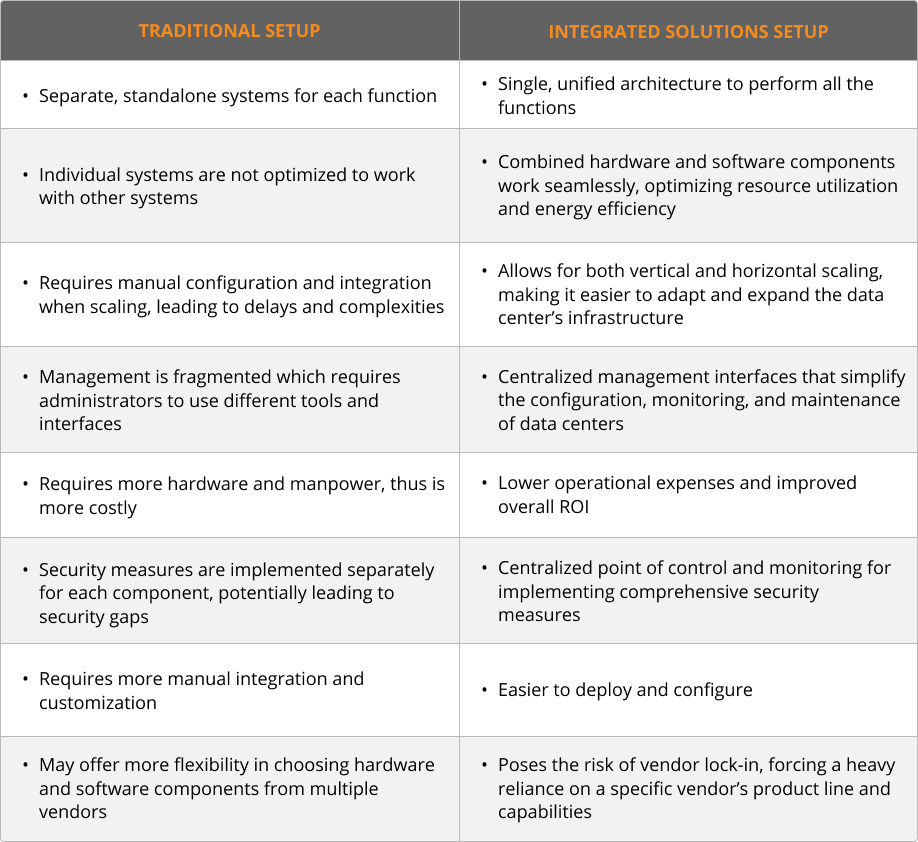Integrated Solutions Buyer’s Guide
Integrated Solutions Buyer's Guide
Introduction to Integrated Solutions

The Importance of Integrated Solutions
In today’s digital age, data centers are the backbone of our increasingly connected world. These hubs of computational power and data storage play a pivotal role in ensuring that businesses, organizations, and individuals can access, manage, and share vast amounts of information efficiently and securely. As the demand for data processing and storage continues to surge, the need for data centers to operate at peak performance has never been more critical.
Additionally, the digital transformation predicted for the next decade, including the rise of 5G, will take place mainly at the edge of the IT network. To create and maintain strong Edge computing, solid IT infrastructure needs to be rapidly deployed in remote locations as efficiently as possible.
In anticipation of performance needs, businesses should look to integrated solutions from Vertiv™, a leader in IT infrastructure since 1965. Vertiv’s integrated solutions, including prefabricated rack, row, aisle, and modular data centers, incorporate flexible designs based on proven configurations.
In today’s digital age, data centers are the backbone of our increasingly connected world. These hubs of computational power and data storage play a pivotal role in ensuring that businesses, organizations, and individuals can access, manage, and share vast amounts of information efficiently and securely. As the demand for data processing and storage continues to surge, the need for data centers to operate at peak performance has never been more critical.
Understanding the Need for Integrated Solutions

Let's Start with a Definition
Data centers are complex ecosystems comprising numerous components, from servers and storage systems to networking equipment and security measures. In the past, these components were often siloed which led to inefficiencies, scalability challenges, and increased management complexity.
Integrated network solutions, on the other hand, offer a transformative approach to managing data center operations.
Integrated solutions for data centers refer to the combination of various hardware and software components into a unified and cohesive system. These solutions streamline data center operations, improve efficiency, and enhance overall performance by integrating key functions such as computing, storage, networking, and management into a single, seamless architecture.
This cohesive and efficient infrastructure allows businesses to maximize performance, minimize complexity, and adapt easily to changing needs.
How Integrated Solutions Differ From Traditional Setups
Pros & Cons of Integrated Solutions at a Glance
Pros
- Easy to deploy.
- Because all the necessary components are included, there is less risk of equipment compatibility issues.
- Quick to set up.
- Often includes features such as hot-swappable power and cooling modules, which can make maintenance easier.
Cons
- Can be more expensive from the onset than a traditional setup.
- Can be difficult to make upgrades down the road as technology changes.

Factors Influencing the Need for Integrated Solutions
Several factors, which reflect the evolving landscape of technology, business demands, and operational efficiency, are driving the need for integrated solutions in data centers today.
Here are some of the key influences.
01 Data Explosion: The exponential growth of data creation and consumption has put immense pressure on data centers.
02 Complexity Reduction: Traditional data center setups involve managing a multitude of hardware and software components separately. Businesses want to consolidate various functions into a cohesive architecture in order to make it easier to manage and maintain.
03 Scalability Demands: Data center workloads are not static; they fluctuate based on business needs. Businesses want to expand resources seamlessly, both vertically and horizontally, without extensive manual intervention.
04 Energy Efficiency: Data centers consume significant amounts of power. Energy efficiency is not only environmentally responsible but also reduces operational costs.

05 Workforce Constraints: Organizations are short of IT resources or personnel and are being pushed to do more work with fewer people.
06 Resource Optimization: There is a growing need to optimize resource utilization, which simply means that computing, storage, and networking resources are used efficiently. This is essential for saving costs and maintaining peak performance.
07 Security Concerns: The increasing frequency and sophistication of cyberattacks requires robust security measures that can be more effectively managed and monitored to safeguard data and infrastructure.
08 Management Simplification: As data centers become larger and more complex, they are looking for centralized management interfaces that simplify the configuration, monitoring, and troubleshooting of components.

09 Business Agility: Rapid technological advancements and changing market dynamics demand that data centers remain agile.
10 Cost Containment: Data centers face intense cost pressures.
11 Compliance and Regulations: Compliance requirements, such as HIPAA or the European Union’s General Data Protection Regulation, necessitate stringent data protection and management practices.
12 Remote Workforce: The shift towards remote work has increased the importance of data center reliability and accessibility
13 Edge Computing: The rise of edge computing, with data processing happening closer to the data source, requires a different approach to infrastructure managed and monitored to safeguard data and infrastructure.
Curious to know how Vertiv™ can assist in your Edge deployment? Read our Edge Critical Infrastructure Solutions Buyer’s Guide.
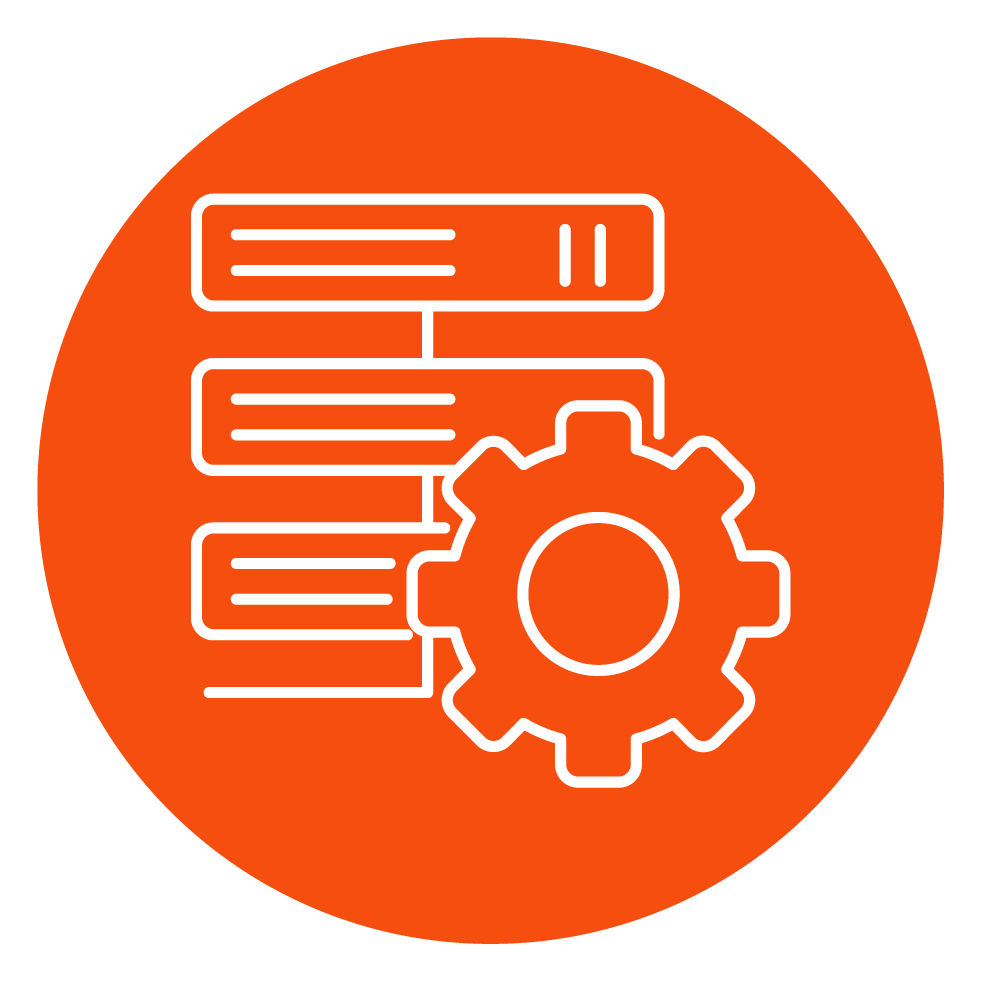
Now that you’ve learned more about the background and need for integrated networking solutions, discover the key features and benefits that these types of components offer.
Key Features & Benefits of Integrated Solutions

Rack Design & Configuration
Rack design and configuration are foundational aspects of integrated solutions in data center environments. A well-thought-out rack design ensures optimal space utilization, efficient cooling, and streamlined cable management.
In integrated solutions, racks are often engineered to accommodate various components, including servers, storage arrays, networking equipment, and power distribution units (PDUs), in a compact and organized manner.
This careful arrangement minimizes the physical footprint of the data center, allowing for more efficient use of valuable space while ensuring that all components work harmoniously.
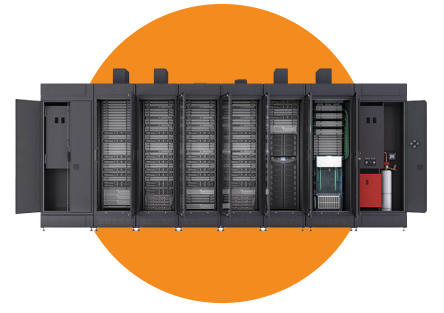
Effective rack configuration extends beyond physical placement. Integrated solutions often provide customization options that allow data center administrators to tailor the rack setup to their specific needs.
This includes features such as adjustable rack heights, modular designs, and cable routing options.
These configurations enable data center managers to optimize airflow for cooling efficiency, maintain accessibility for maintenance and upgrades, and create a tidy and manageable cable infrastructure.
Learn more about rack dimensions and measurements in our Rack Systems Buyer’s Guide.
Some key measurements to know include:
- Standard rack widths are typically 24 – 32 inches, with the internal rail width of 19 inches being the most common.
- As a rule, you should leave at least 2 – 3 inches of space between the front and back of the equipment for cable management.
- The height of the rack is also known as the “U-space”. One “U” is equal to 1.75 inches, and most racks are available in sizes ranging from 4U to 42U.
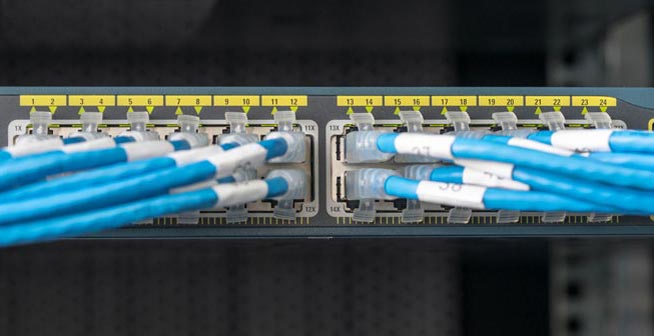
Networking Capabilities
Networking capabilities represent a crucial facet within a data center. Integrated solutions are designed to seamlessly merge computing, storage, and networking functions into a unified framework.
By incorporating networking features directly into the integrated solution, data centers can ensure efficient data transfer, low-latency communication, and robust connectivity between various components.
This integration optimizes network performance, allowing data to flow smoothly and rapidly across the infrastructure. In an era where connectivity and data transfer are fundamental to business operations, the networking capabilities of integrated solutions are instrumental.
Power Management
While networking capabilities tend to be the most popular feature of integrated solutions, power management is often the most overlooked feature. Integrated solutions are designed not only to optimize data processing but also to manage power consumption efficiently by incorporating PDUs and monitoring capabilities that provide real-time insights into power usage at both the rack and component levels.
This depth of visibility enables administrators to implement power-saving strategies and allocate resources judiciously, ultimately leading to reduced energy costs.
Moreover, integrated solutions often include intelligent power management features, such as load balancing and automated power provisioning. These power resources are allocated dynamically based on workload demands, which not only maximizes energy efficiency but also prevents overloading and potential downtime.
As sustainability and energy conservation become increasingly important considerations for data centers, integrated solutions with robust power management features help organizations meet their environmental goals while optimizing operational expenses.
Cooling System
Cooling systems are designed to address the issue of heat management within a data center. Integrated solutions incorporate advanced cooling technologies such as in-row cooling units, hot/cold aisle containment, and precision air conditioning systems. By strategically placing cooling resources within or adjacent to racks, integrated solutions ensure that heat generated by servers and other hardware is effectively dissipated.
This approach optimizes temperature control, minimizes hot spots, and enhances the overall thermal efficiency of the data center. Delve into this topic even more when you read our Thermal Management Buyer’s Guide.
Integrated solutions often come equipped with environmental monitoring and management tools that provide real-time insights into temperature and humidity levels. Data center administrators can use this data to fine-tune cooling systems and maintain an optimal operating environment. These integrated cooling solutions ultimately improve the reliability and performance of the entire data center infrastructure.
Management Software
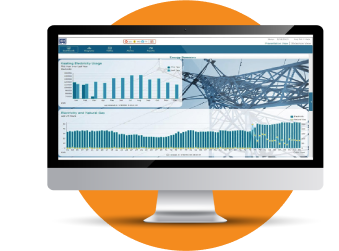
Management software is a cornerstone feature of integrated solutions which offers a centralized and streamlined approach to overseeing the entire data center infrastructure. These software components give a unified interface for monitoring, configuring, and managing various aspects of the data center environment, including servers, storage systems, networking hardware, and power distribution.
With integrated management software, complex operations that would otherwise require multiple tools and interfaces can be simplified, saving time, and reducing the risk of errors.
One of the primary advantages of integrated management software is its ability to provide real-time visibility into operations. Administrators can efficiently track the status of hardware components, monitor resource utilization, and respond proactively to potential issues or bottlenecks. Additionally, these software tools often include automation features, making it easier to scale infrastructure as needed.
5 Key Issues to Assess your Network Needs

Planning is Essential
Before embarking on the journey to select an integrated solution for your data center, it is essential to assess your current network and data management needs. Ponder these key issues to make an educated and well planned investment.
01 Identify Current Challenges and Pain Points
The first step is to identify any existing challenges and pain points within your current data center environment. These may include slow application performance, frequent downtime, storage limitations, complex management, or difficulty in scaling infrastructure.
Engage with your IT team and end users to gather feedback and create a comprehensive list of issues that need to be addressed. This will form the basis for the improvements you seek from an integrated solution.
02 Determine Scalability Requirements
Next, consider your organization’s current and anticipated growth in terms of data processing, storage demands, and user access. Assess how well your current infrastructure can accommodate this growth. As mentioned above, integrated solutions are often valued for their scalability. Determine whether you need vertical scaling (adding more resources to existing systems) or horizontal scaling (expanding by adding more units). Understanding your scalability requirements will ensure your integrated solution can adapt to evolving business needs without compromising performance.
03 Evaluate Security and Compliance Needs
Security and compliance are non-negotiable factors in today’s data-driven world. Evaluate your organization’s security and compliance needs, including data protection requirements, access controls, and regulatory mandates (such as HIPAA or GDPR). Integrated solutions offer centralized security features and help streamline compliance efforts. Ensure that the solution you choose aligns with your security and compliance objectives.
04 Consider Future Growth and Technology Trends
Data center solutions are long-term investments. Consider not only your current needs but also where your organization will be in the next three, five, or even 10 years. Anticipate technological trends, such as the adoption of AI, IoT, or cloud computing, and evaluate how your integrated solution can support these future developments. A flexible and adaptable solution will save you from frequent infrastructure overhauls as technology evolves.
05 Set a Budget
Define your data center’s budget constraints and objectives clearly so you can find a solution that balances performance, scalability, and affordability. Consider both the upfront costs and the long-term total cost of ownership. While integrated solutions may have a higher initial investment, they often lead to cost savings in terms of operational expenses and resource optimization.
You will gain a comprehensive understanding of your operation’s network needs when you systematically address each of these areas. This assessment will serve as a foundation for selecting the most suitable integrated solution for your data center, and to help ensure that it aligns with your organization’s goals and can adapt to the ever-changing digital landscape.
Featured Products
Rely on Vertiv™ for the Answer
Vertiv™ is a leading global critical digital infrastructure provider. The company began IT infrastructure support in 1965 and has since expanded to 27 manufacturing centers around the world.
Vertiv™ engineers are continually developing and launching products to stay ahead of the technological demands. Below we share details of three key products in the integrated solutions category.
Discover the benefits and features of each.
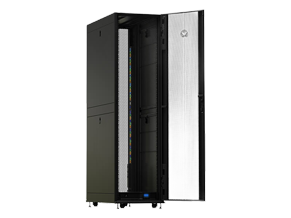
Vertiv™ SmartCloset™ is a complete solution curated by Vertiv experts to enable rapid and risk-free IT deployments at the Edge. The Vertiv SmartCloset brings together Vertiv™ VR Rack, Vertiv™ Liebert® UPS, and Vertiv™ Geist™ rPDU in one easy-to order product providing the infrastructure required to support mission-critical business operations.
Key Benefits:
- Simplify IT deployments in Edge applications
- Increase deployment speed for critical IT
- Reduce management complexity by seamlessly integrating infrastructure devices
- Eliminate the risk of incompatible products
- Enjoy peace of mind with consistent system-level warranty coverage
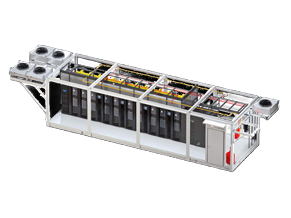
Vertiv™ Power Module 1000/1200 enables you to deploy isolated, power-dense, critical infrastructure capacity just in time to meet your business demands.
Key Benefits:
- Energy efficient operation with airflow containment
- Rapid deployment with limited site work
- Simple, hot scalability of your site’s power capacity
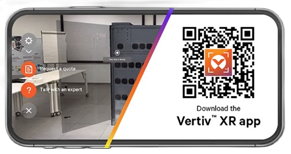
Vertiv™ SmartMod™ is a flexible platform, optimized for simplified deployment of critical IT assets. For small room IT deployments up to 10 racks and 100kW or less, SmartMod offers a simple way to install capacity in a fraction of the time a typical IT build might take.
Key Benefits:
- Modular and scalable Vertiv™ Liebert® UPS power protection
- Close-coupled, in-row Liebert® CRD thermal management units
- Classic and cost-effective Vertiv™ racks
- And much more!
Maintenance & Optimization
Plan for Peak Peformance
After you have selected the right integrated solution for your data center, it is essential to plan strategies for maintenance and optimization. This will ensure that your investment continues to deliver peak performance and efficiency.
Here are some considerations:

Ongoing Maintenance Practices
Ongoing maintenance is the bedrock of integrated solution reliability. Establish a routine maintenance schedule that includes hardware and software checks, firmware updates, and regular system health assessments. This proactive approach helps identify and address potential issues before they escalate into critical problems.
Regularly clean and inspect your equipment, paying special attention to cooling systems. Keep comprehensive records of maintenance activities, which can be invaluable for troubleshooting and warranty claims. Additionally, consider implementing remote management tools provided by your integrated solutions partner to streamline maintenance tasks and reduce the need for physical intervention.

Monitoring and Performance Tuning
Utilize the built-in monitoring features of your integrated solution, which often provide real-time insights into resource utilization, temperature, power consumption, and more. You also can set up alerting mechanisms to detect and respond promptly to anomalies or performance bottlenecks.
Performance tuning involves adjusting configurations and resource allocation to optimize the efficiency and responsiveness of your data center. Regularly review performance metrics and adjust as needed.
Fine-tune virtualization settings, storage, and network configurations to ensure resources are placed where they are most needed. Consider using automation and orchestration tools to allocate resources dynamically based on workload in order to maximize efficiency.
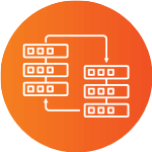
Scaling Strategies
With scalability being a key benefit of integrated solutions, it is essential to have a well-defined scaling strategy. Vertical scaling involves adding more resources to existing systems, such as upgrading a central processing unit, memory, or storage capacity. Horizontal scaling entails expanding by adding more units or racks to accommodate increased workloads.
Work closely with your IT team to monitor performance trends and anticipate when additional resources are required. Develop a scaling plan that outlines the specific triggers for scaling, whether it is reaching a certain resource utilization threshold or projected growth targets. Ensure that your integrated solution provider offers scalability options that align with your data center’s needs.
These proactive measures not only extend the life of your data center infrastructure but also ensure that it can adapt seamlessly to the changing demands of your organization.
As your certified Vertiv Liebert Office, we at JG Blackmon & Associates have many services to help you maintain and optimize your data center.
From battery testing and power maintenance to HVAC thermal management and performance optimization, you don’t have to tackle these issues alone. Find our complete list of services here.
Let Us Help!

Get Expertise from a Reliable Partner
Don’t let integrated network solutions for your data center overwhelm you. While bringing all the pieces of your network into one system may seem challenging, the result produces a more robust, scalable, secure, and efficient network infrastructure that will set your business up for a successful future.
Curious to learn more or see how integrated network solutions have proven successful? Read Vertiv’s blog, “When Do Modular Data Centers Make Sense?” It shares a case study of a UK border patrol site in Kent, which was able to add capacity quickly thanks to the Vertiv™ SmartMod™.
As your reliable Vertiv Services partner, we are here to help you. Our team has decades of experience and can help you select the best integrated network solution to meet your goals. Contact us today to learn more.

